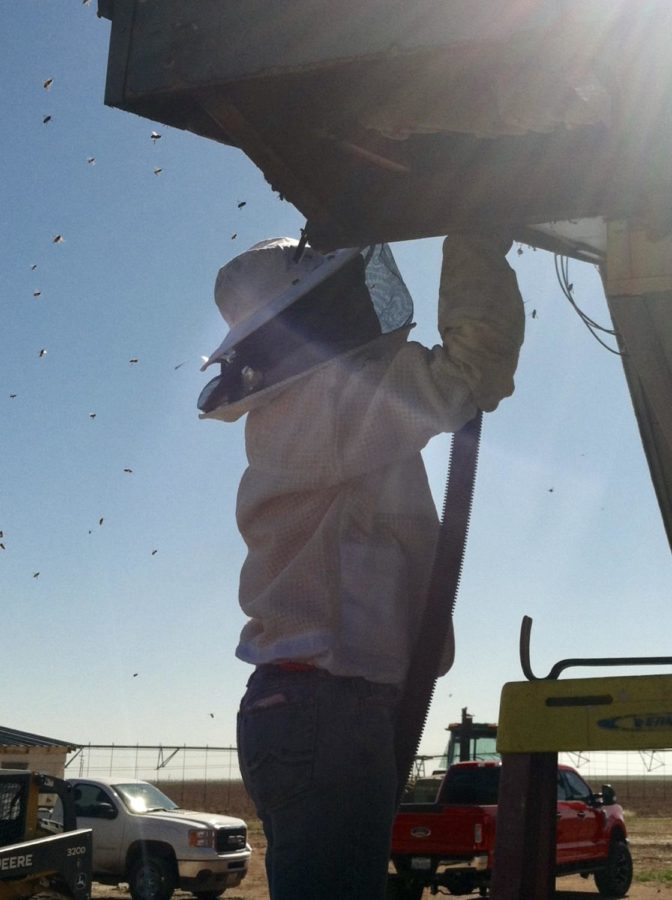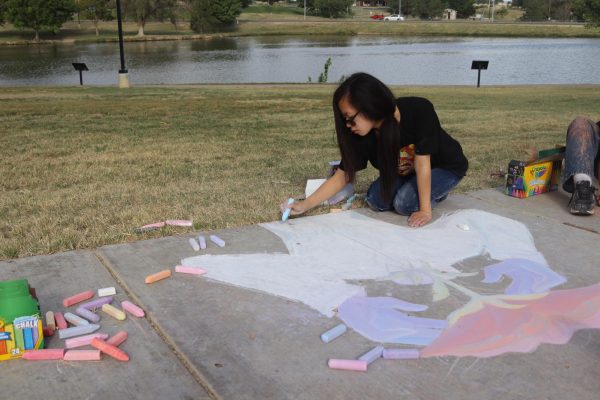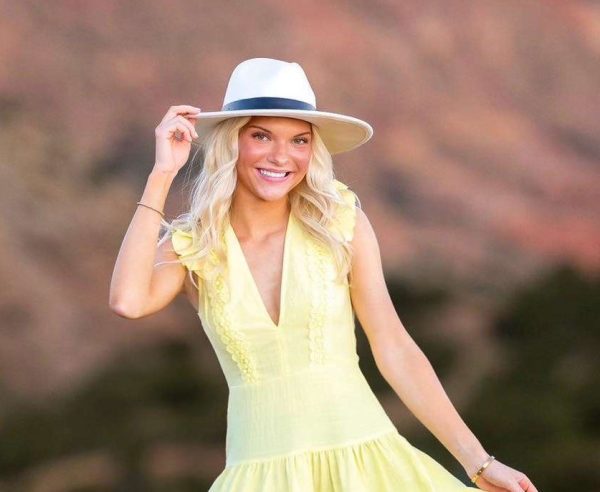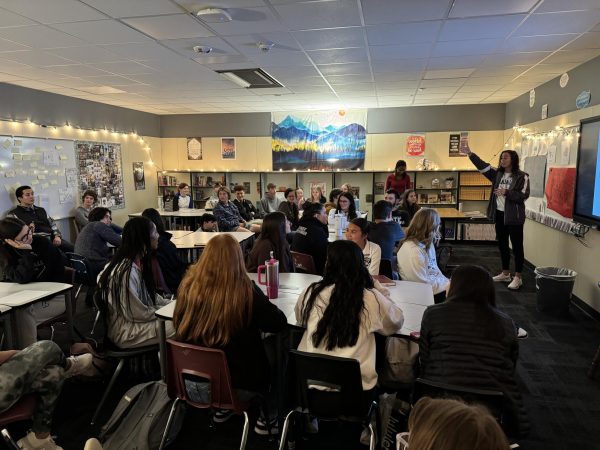Mrs. Allen, Randall’s Queen bee: Algebra teacher rescues and shelters bees
Inside of a Texas Panhandle backyard rests 19 wooden boxes approximately the size of a plastic chair. If one was to approach these boxes, what was once a very subtle buzzing would become much more intense. Inside of these boxes are hives of bees, each with their own queen. These bees are not only being kept for the purpose of harvesting honey, as they were rescued from locations where their hive was either not fit to survive or was problematic to nearby residents.
If a student of pre-AP algebra II teacher, Lisa Allen´s were to enter her backyard, they might be caught off guard by the bee hives she and her husband, Layne Allen, keep. In 2012, Mrs. Allen and her husband were ¨adopted by a swarm of bees,¨ when they found a hive on the back patio of their house. After placing this swarm in a hive box, the Allen´s had become beekeepers. From here, they began to rescue hives on bee saving expeditions that are tedious and painful, literally, as they get stung by bees through their suits.
¨The rescuing is hard work,¨ Allen said. ¨It is so much time consumed, but we want to help as many (bees) as we possibly can. It’s very unlikely that we don’t get stung, and on average, (a rescue) lasts four to six hours. Basically, we are like the bee´s last chance. We rescued one hive that was in a little kid´s play kitchen. If we can’t rescue the bees, they will be killed.¨
Allen said she loves almost everything about beekeeping; however, she said the part she doesn’t like is when they are unable to save a hive so it has to be killed, which has happened to her before.
¨There is a house in Canyon,¨ Allen said. ¨It is an older home; so if you tear it up, you won’t be able to replace some of the parts. The bees had gone up, through a crack, and into a brick column on the front porch. We were hoping the bees were above the patio, but they weren’t, and there was no way we were going to get them out without tearing up the brick, so they had to be killed.¨
Although Allen said her main goal is to protect the bees, she will still collect honey from their hives at no detriment to the bees. After allowing the beehive a two year period to fill up their hive box (called a two-deep), then, she will begin to collect the honey that she will sell or give away.
“We don’t touch those deeps because that’s how (the bees) survive in the winter,” Allen said. “After two years, we put a more shallow box up on top of the two deeps. That’s where they put the honeycomb. We do this every fall, and this year, we got 224 pounds.”
Allen said after collecting the honey, her first priority is to give it to people with allergies, because it is really helpful for them. Allen claimed there are many medicinal properties that bees possess, even what many dread, the sting, as it can help with many health problems.
“My favorite thing about beekeeping is the bees,” Allen said. “Bees are fascinating, and honestly, there is nothing bad about a bee, even the sting. The stings are medicinal, they help arthritis, they help with allergies, and they are starting to use the stings to fight cancer. Most importantly, (the bees) pollinate. It has been said that, if all the bees are gone, then there are about four years left for mankind.”









